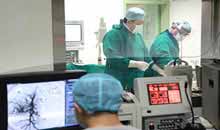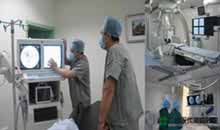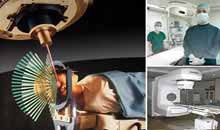How to vocalize is an important link of treatment for post-operative throat cancer patients. Therefore, patients and their family members should attach great importance to it. Besides, patients may feel anxiety and worried since they lost their speech after surgery, and need understanding and support from their family members and friends to get through this hard period.

At the beginning of speech training, post-laryngectomy patients can firstly communicate with others by writing, gesture or picture, etc. For the total laryngectomy patients, they have to study a new manner of vocalization. Thus medical personnel or speech-language pathologist should explain potential vocalization to ease patients’ anxiety before operation.
Experts from Modern Cancer Hospital Guangzhou introduced, there are three main methods of regaining voice for post-operative throat cancer patients: artificial throat, esophagus speech and tracheoesophageal speech. Patients can choose suitable one according to their own condition to restore voice.
1. artificial throat
Artificial throat utilizes artificial vocalization device instead of vocal fold vibration to vocalize and then is articulated into speech by cooperative work of nose, pharynx, mouth, tongue, tooth, lips. There are mechanical artificial throat and electronic artificial throat.
2. Esophagus speech
The air stored in esophagus rushes up the muscles around esophageal mouth leading to vibration which produces a sound and then into speech by modification of nose, pharynx, mouth, tongue, tooth and lips. This is the most convenient and economic vocalization method. About one third patients without throat can use this method.
3. tracheoesophageal speech
tracheoesophageal vocalization is one of the most effective vocalization methods after surgery. A small opening called fistula is created by surgery in pharyngeal portion or between the trachea and the esophagus. A small valved tube is placed into the opening so that air can divert into esophagus. With practice, patient can make this diverted air vibrate the wall of esophagus, producing a sound. By moving the lips, tongue, etc, the sound is articulated into quite normal speech.
If you have any questions, please contact us via online consultation, email or phone call. If you find our website useful, please follow our FaceBook and YouTube, health information will be updated regularly.


























